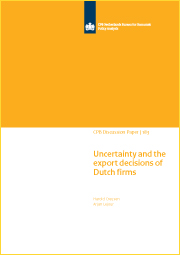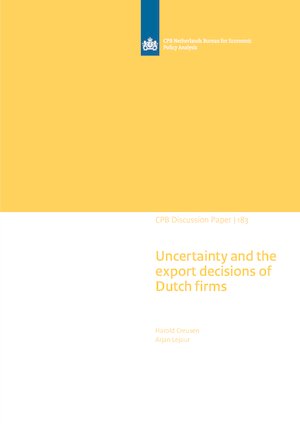Uncertainty and the export decisions of Dutch firms

We show that firms follow a stepping stone approach for reaching markets further away (physically and culturally) by including the distance to accessed export markets in our analysis. They first enter more nearby markets before moving to more distant markets. Moreover, we find that the presence of support offices and trade missions in destination countries, particularly middle income countries, stimulate the entry of new exporters and export growth. Knowledge spillovers from firms with the same export destinations have also positive effects on market entry.
These conclusions follow from using detailed international trade data by firm and destination between 2002 and 2008 combined with firm data and export market characteristics. We find that about 5% of all Dutch exporters have just started in their first market and a similar share of exporters ceases all exports. Still, the starting exporters increase their exports very fast. In each market their export growth in their third year as exporter is about twice as high as for established exporters. Many starters also increase their exports by expanding their number of destinations, but they will retreat swiftly if they are not successful. For all exporters, we find that more productive and larger firms are more inclined to enter (additional) export markets, and that larger firms are less likely to leave a market. Market characteristics are important as well. Distance to the home country (apart from distance to accessed export markets) and import tariffs reduce the probability to enter the market and increase the probability to exit.
Read also:
• Using Stepping Stones to Enter Distant Export Markets, Global Economy Journal 15(1), 2015, p 107-132 and
• Market Entry and Economic Diplomacy, Applied Economic Letters 20(5), 2013, 504-507
Downloads
Authors

